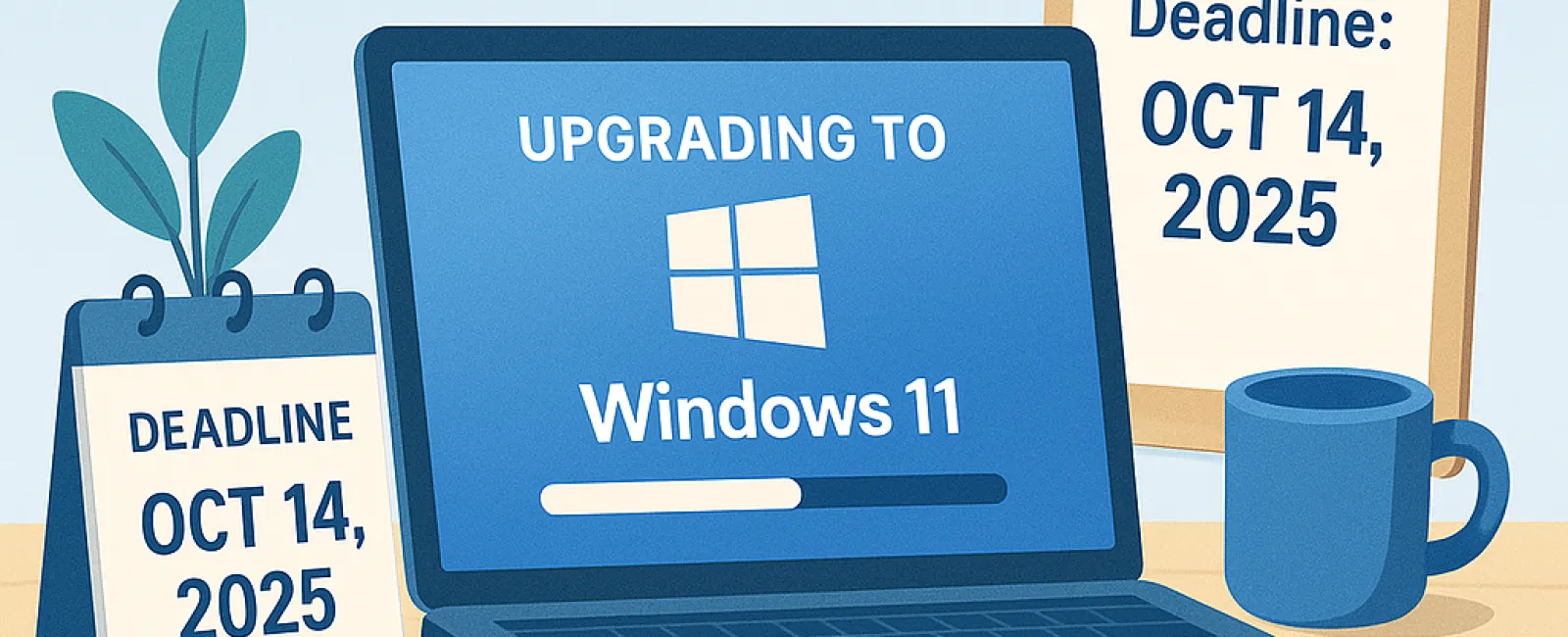June 23, 2025
If your business is still relying on Windows 10, it's time to act fast.
Microsoft will officially end all support for Windows 10 on October 14, 2025. This means no more security updates, bug fixes, or technical assistance from that date forward.
But the real cost of waiting isn't just the eventual upgrade—it's the risks and losses you face right now.
Delaying your upgrade could end up costing your business far more than you think.
Procrastination Is A Costly Business Mistake
We understand—upgrading every device can seem overwhelming and expensive. It's easy to put it off until something goes wrong.
But here's what postponing the upgrade truly costs you:
1. Operating Without Essential Security
After Microsoft stops updating Windows 10, your business becomes vulnerable to new threats.
Cybercriminals target outdated systems because they're easy to exploit—like locking the front door but leaving windows wide open.
A single security breach could cost thousands or even jeopardize your entire business.
2. Compatibility Problems With Software And Hardware
Many critical business applications—accounting software, CRMs, and industry-specific tools—are already dropping Windows 10 support.
If your systems fail during a project or client presentation, the cost in lost time and reputation can be significant.
It's not just software—new printers, peripherals, and security devices may stop working with Windows 10.
3. Declining Productivity
Older systems run slower, crash more often, and frustrate your team. Even minor delays add up, reducing efficiency, morale, and your competitive edge.
If each employee loses just 10 to 15 minutes daily to technical issues, imagine the cumulative cost over a month.
4. Emergency Upgrades Cost More
Waiting until systems fail triggers panic-driven spending with expensive emergency hardware orders, rush IT services, and costly downtime.
● Emergency hardware purchases
● Rush IT labor fees
● Business interruptions during replacements
Planning ahead now saves you from scrambling—and overspending—later.
5. Risking Regulatory Compliance Violations
Businesses handling sensitive data or regulated by standards like HIPAA or PCI-DSS face serious risks using unsupported systems. Windows 10 will no longer meet these security requirements after October, potentially leading to fines or legal action.
How Savvy Business Owners Are Preparing
Proactive businesses aren't just upgrading devices—they're leveraging this change to:
● Evaluate which devices need replacement
● Optimize software and toolsets
● Strengthen cybersecurity defenses
● Strategically plan IT budgets for 2025
Steps To Ensure A Seamless Upgrade
We recommend the following approach:
● Perform a compatibility assessment—Identify which machines can upgrade to Windows 11 and which require replacement.
● Audit your essential applications—Confirm that your critical software is compatible with Windows 11 or newer platforms.
● Budget for new hardware now—Avoid supply chain delays by ordering early.
● Partner with experienced IT professionals—We manage the entire transition smoothly, minimizing downtime and surprises.
Don't Wait Until The Last Minute To Take Action
Procrastination will only increase your costs, stress, and lost opportunities. We help small businesses upgrade smartly—with careful planning, smooth execution, and future-ready solutions.
Click here or give us a call at (925) 766-4005 to schedule your FREE 15-Minute Discovery Call and receive expert guidance on what to upgrade, what to keep, and how to create a transition plan that keeps your business running seamlessly before the deadline.





